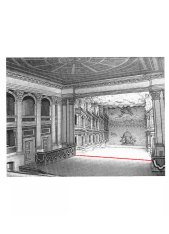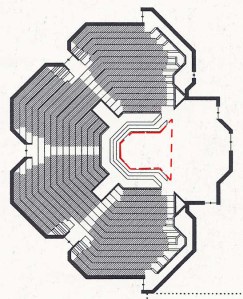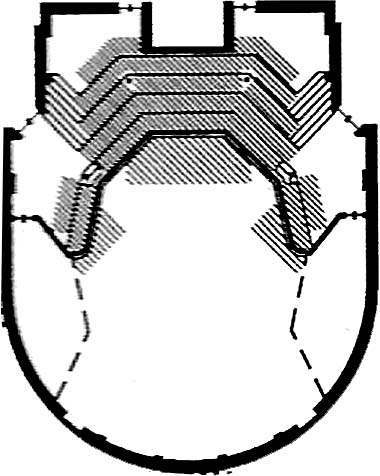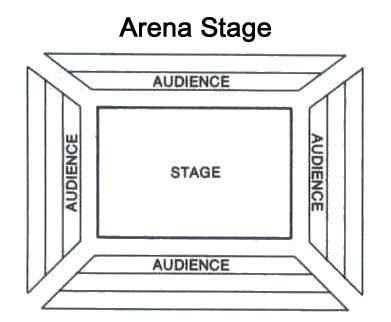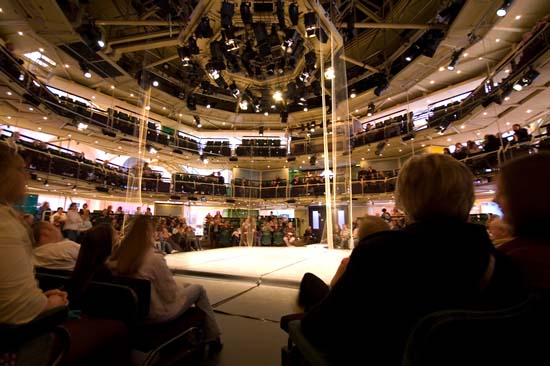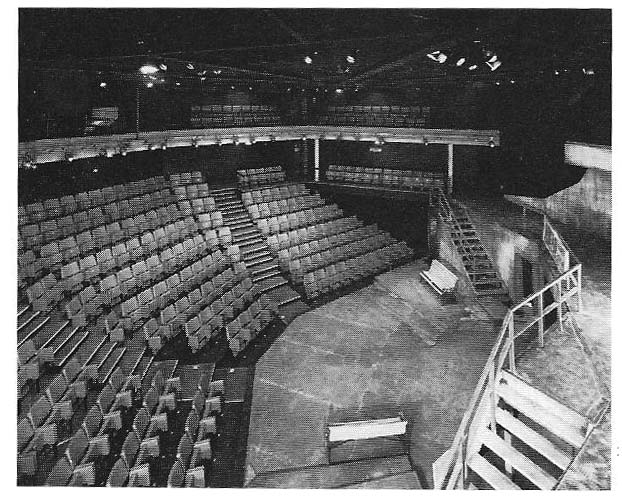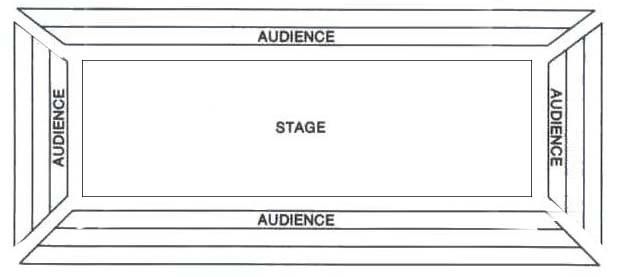Stage Types:
– Proscenium stage:
A proscenium it can be said that it’s a “window” that frames the play taking place on the stage. This type of stage, gives everyone in the audience a good view because the performers need only focus on one direction rather than continually moving around the stage to give a good view from all sides.
A proscenium theatre arrangement also simplifies the hiding and obscuring of objects from the audience’s view (sets, performers not currently performing, and theatre technology). Anything that is not meant to be seen is simply placed outside the “window” created by the proscenium arch, either in the wings or in the fly space above the stage.
Example: Theatre royal – Westminster, London – 1674 – Sir Christopher Wren.
_____________________________________________________________________________________________________________________________________
– Thrust theatre stage:
A thrust theatre stage is known by its arrangement which consists of being surrounded by audience on three sides. The Fourth side serves as the background.
Often the playing area is of square or rectangular shape, usually raised and surrounded by raked seating.
Example: Crucible Theatre – Sheffield, South Yorkshire – 1971 – Arch. Renton Howard Wood associates
_____________________________________________________________________________________________________________________________________
– End Stage:
An End stage is the same as the Thrust stage but in this case the audience is located only on the front of the stage and doesn’t extend around it. “Backstage” is behind the background wall. There is no real wing space to the sides, although there may be entrances there. An example of a modern end is a music hall, where the background walls surround the playing space on three sides. Like a thrust stage, scenery primarily background.
Example: Almeida theatre – Islington, London – 1983/86′ – Arch. Burrell Foley Fischer
_____________________________________________________________________________________________________________________________________
Arena Theatre:
An Arena stage is characterized by a central stage surrounded by audience on all sides. The stage area is also often raised to improve sightlines.
Example: Royal exchange theatre – Manchester – 1976 – Arch. Levitt Bernstein Associates
_____________________________________________________________________________________________________________________________________
Flexible theatre:
Sometimes called a “Black Box” theatre, these are often big empty boxes painted black inside. Stage and seating not fixed. Instead, each can be altered to suit the needs of the play or the whim of the director.
Example: Octagon theatre – Bolton – 1967 – Designed by Geoffrey H. Brooks (Bolton’s director of architecture)
_____________________________________________________________________________________________________________________________________
Profile Theatres:
These type of theatres are usually used in existing or “found space” theatres, for example converted from the original space usage.
The Audience is often placed on risers to either side of the playing space, with little or no audience on either end of the “stage”. Actors are staged in profile to the audience. It is often the most workable option for long, narrow spaces.
Scenically, is most like the arena stage; some background staging possible at ends, which are essentially sides. A non-theatrical form of the profile stage is the basketball arena, if no-one is seated behind the hoops.
_____________________________________________________________________________________________________________________________________
Sports Arenas:
Sports arenas often serve as spaces for Music Concerts or plays. In terms of form it can be said that they resemble an arena stage but larger and often rectangular in plan. When used for concert, a temporary stage area is set up as an end stage at one end of the floor (stage), and the rest of the floor and the stands become the auditorium.
An Arena is designed for sport events. Setting it up for a concert or a play means to insert a new type of program into an existing space designed for a different type of program. Consequently a great ammount of consideration is required when arranging the space for the new temporary program.
The stage is usually set up as an End Stage, or occasionally in the center as an “Arena” Stage.
Example: 02 Arena – North Greenwich, London – 2003/07′ – Populous architects
_____________________________________________________________________________________________________________________________________



